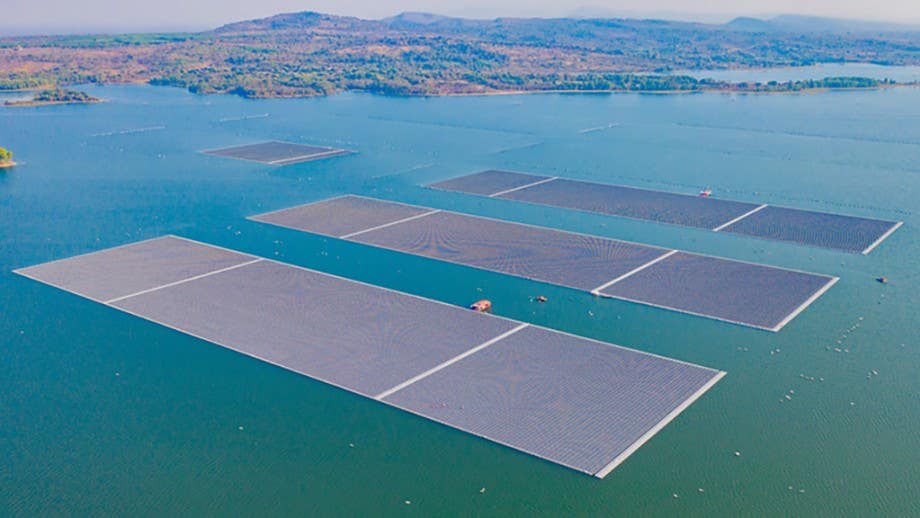‘Floating’ solar panels could provide power for billions of people
As solar energy continues to shine brightly in the arsenal of renewable sources, researchers grapple with the challenge of space.

[Sept. 19, 2023: Staff Writer, The Brighter Side of News]
As solar energy continues to shine brightly in the arsenal of renewable sources, researchers grapple with the challenge of space. (CREDIT: Creative Commons)
In our relentless quest for sustainable energy solutions, innovators often stumble upon creative methods to maximize energy sources. As solar energy continues to shine brightly in the arsenal of renewable sources, researchers grapple with the challenge of space. Solar panels, as we know them, require ample open spaces to operate efficiently. But what if our expansive oceans could be the answer?
A groundbreaking paper from engineering professors at the Australian National University (ANU) has unveiled a novel solution to this spatial challenge: floating solar panels strategically positioned in calm equatorial waters.
Calm Seas Offer Green Energy Potential
Traditionally, the installation of solar panels on the earth's surface has dominated solar energy production. Yet, there are vast swathes of our planet — specifically in the equatorial regions — that remain an untapped reservoir for solar energy potential.
Graphical abstract related to the study. (CREDIT: MDPI)
Research has indicated that the waters surrounding regions like Indonesia and equatorial west Africa enjoy a distinct tranquility. Waves in these areas rarely surpass 20 feet, and winds seldom exceed a velocity of 50 feet per second (approximately 34 miles per hour). These calm conditions negate the need for expensive storm defenses, making it a promising domain for solar infrastructure.
A Powerhouse of Sustainable Energy
To put the energy potential into perspective, if this innovative approach is successfully executed, floating solar panels in equatorial waters could churn out a staggering 1 million terawatt-hours of energy every year.
Cumulative global installed capacity of floating PV. (CREDIT: MDPI)
To bring home the magnitude of this figure, the researchers contextualized it in a post for The Conversation: "that’s about five times more annual energy than is needed for a fully decarbonized global economy supporting 10 billion affluent people.”
Highlighting the potential further, the ANU team identified the Indonesian waters alone as a powerhouse. Over the past 40 years, approximately "140,000 square kilometers [about 54,054 square miles] of seascape" in the region has enjoyed waves no taller than 4 meters (about 13 feet) and winds no more than 10 meters per second (around 22 miles per hour).
Challenges on the Horizon
However, every ambitious proposal comes with its set of challenges. One of the primary concerns stems from the changing climate patterns. As global temperatures ascend, the calm waters of the equator may not remain serene forever. Wave and wind patterns could shift, potentially posing threats to the floating solar infrastructure.
Heatmap for offshore floating solar panels. Red areas are best, followed by yellow, green and dark blue. The grey lines show tropical storm tracks. (CREDIT: ANU and OpenStreetMap base)
Furthermore, the project's environmental footprint cannot be overlooked. Solar panels, as designed for terrestrial use, predominantly consist of silicon and aluminum.
Related Stories
Yet, aluminum's susceptibility to corrosion in marine environments necessitates the development of specialized panels for these waters. Manufacturers wouldn’t want these panels to become ocean pollution like fishing/aquaculture debris.
Heatmap for offshore floating solar panels in Indonesia. Red areas are best, followed by yellow, green and dark blue. The grey lines show tropical storm tracks. (CREDIT: ANU and OpenStreetMap base)
The welfare of marine life in proximity to these installations is paramount, requiring developers to tread with caution.
An Optimistic Future
Despite the challenges, there's a palpable sense of excitement around the possibilities. One enthusiastic commenter opined, "Every reservoir in the world should have floating solar to do two things — produce power and reduce evaporation which will be sorely needed as temperatures continue to rise.”
If we harness even a fraction of the energy potential highlighted in the ANU paper, the global community could make monumental strides in sustainable electricity generation.
Floating solar panels in equatorial waters could very well be the next frontier in our collective endeavor to secure a greener future for our planet.
For more green news stories check out our Green Impact section at The Brighter Side of News.
Note: Materials provided above by The Brighter Side of News. Content may be edited for style and length.
Like these kind of feel good stories? Get the Brighter Side of News' newsletter.
Joseph Shavit
Head Science News Writer | Communicating Innovation & Discovery
Based in Los Angeles, Joseph Shavit is an accomplished science journalist, head science news writer and co-founder at The Brighter Side of News, where he translates cutting-edge discoveries into compelling stories for a broad audience. With a strong background spanning science, business, product management, media leadership, and entrepreneurship, Joseph brings a unique perspective to science communication. His expertise allows him to uncover the intersection of technological advancements and market potential, shedding light on how groundbreaking research evolves into transformative products and industries.



